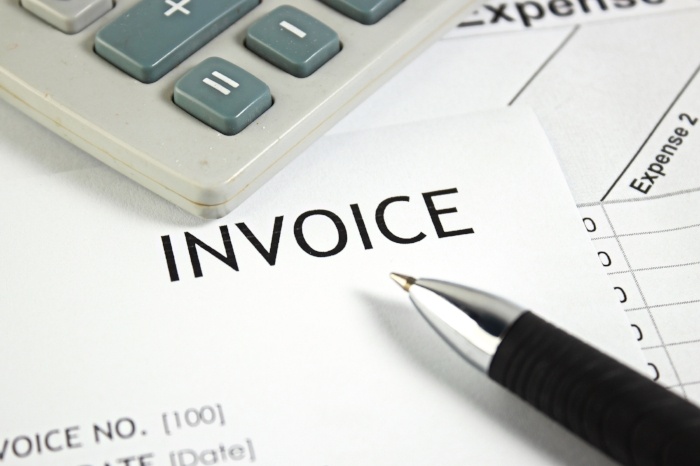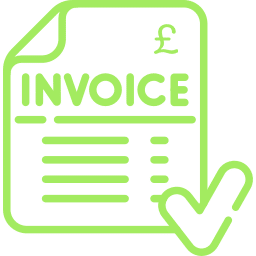There’s more to invoice discounting than just offloading your invoice. It can be a beneficial and selective form of raising finance when you need it, without giving up any credit control.
You have probably noticed there is more than one type of invoice finance available to you. You have probably been called a hundred times by your bank offering various options.
We’ve explored each aspect of invoice discounting to give you a complete guide to the benefits and the alternatives, this includes:
– What is invoice discounting?
– How invoice discounting works
– Using invoice discounting as a credit facility
– Chasing invoices
– What is confidential invoice discounting?
– How confidential invoice discounting works
– Invoice factoring vs invoice discounting
– Is invoice discounting right for you?
What Is Invoice Discounting?

Using an invoice discounting facility involves raising an invoice for your customer in the same way as you normally would, except you also send a copy to your invoice finance provider.
You take that invoice and you then ‘sell’ it as unpaid to a finance provider, who will release a percentage of the value immediately back to you. Once the invoice is paid by your customer, the invoice discounting provider releases the balance of the invoice – less their fee.
Invoice discounting allows a business to maintain their credit control. Invoice factoring transfers all the credit control responsibility to the factoring company, and invoice discounting becomes a flexible and ongoing asset finance arrangement.
How invoice discounting works in practice
If you are a manufacturing company that has set up an invoice discounting facility with your financial provider, as soon as you start invoicing, the process becomes a straightforward one.
You raise an invoice to your customer for £4,000, the invoice discounting provider will then pay out a percentage of that invoice of up to 90%.
The manufacturing company can then draw down £3,600 as soon as that invoice is forwarded to the invoice discount provider.
This is usually done through some kind of online portal linked to their account.
When the invoice has been settled, which could be 30-60 days later, the finance works in one of two ways:
- The invoice company releases the remaining 10%, after taking their 3% fee of £120, which leaves £280 more available to the manufacturing company
- Or, the company receives payment and transfers the full amount of the invoice to the finance provider – plus their fees.
All of this is usually done confidentially, which means that the customer still thinks it’s paying the manufacturing company.
Using it as a credit facility
A business might also realise the advantages of invoice discounting through using the benefit of it being a credit facility.
When invoices are paid it can free up further drawdown credit. This can then be offered by the finance provider after accessing the sales ledger across the year, not just individual invoices.
This is ideal for companies that are looking to free up working capital that is otherwise tied into their sales ledger and the inconsistent payment patterns of customers.
Chasing invoices
The responsibility of chasing your invoices remains your responsibility. If you need help with credit control, try invoice factoring (see below).
When you are in control of your debtors’ account, you can benefit. The quicker they pay, the quicker you can release the drawdown facility from your invoice discount provider.
What Is Confidential Invoice Discounting?

Confidential invoice discounting is a way of immediately releasing cash from your unpaid invoices. It enables your customers to be unaware that you are using a third party, yet provides your company with a cash boost.
Confidential invoice discounting works the relationship between three parties; the customer (debtor), the business and the invoice finance provider. Offering benefits to the latter two, while the first one doesn’t see any change in the process.
Only the invoice finance provider and the business will be aware of the invoice finance arrangement, which explains the confidentiality part.
Strictly confidential or strictly selective?
You may have concerns over how invoice finance can affect your relationship with customers. This isn’t a worry if you are using confidential invoice discounting, where to all intents, the customer has no idea you are using an invoice finance arrangement.
So, while pressuring your customers to pay their invoices, you can be financially satisfied that you already have access to the benefits of their invoice being paid.
For those companies that don’t always need an invoice finance arrangement in place, but which are affected by seasonal fluctuations in customers- selective invoice discounting might prove to be a more amenable option.
It becomes a quick-funding facility for a business that has to endure unbalanced relationships with slower-paying customers and paying suppliers with much stricter payment schedules.
How confidential invoice discounting works in practice
If a business uses confidential invoice discounting, when raising an invoice to their debtor, it will also send a copy along with its other invoices, to the invoice finance provider. Once received, and usually within 24 hours, the invoice finance provider will release a cash advance to the business.
The amount of cash released can be up to 90% of the invoice value, depending on the agreement between the company and the invoice finance provider.
Meanwhile, because this arrangement is confidential, the company will continue its role of chasing up the payment of invoices from its customers, with the customers remaining unaware of the involvement of the invoice finance provider.
When the customer eventually pays the invoice, it may be paid into an account that holds the name of the company, yet is under the control of the invoice finance provider.
Full payment of the invoice triggers the invoice finance provider to release the outstanding 10% of the invoice – less their agreed fees – to the company.
Invoice Discounting vs Invoice Factoring

Invoice finance is offered in two forms: invoice factoring and invoice discounting.
Both are facilities that release working capital into your company, capital you need to grow your business.
So which one is right for you?
- They both provide a fast repayment against the sales ledger
- They both increase working capital
- They both improve cashflow
We’ve compared the relative benefits of each within this article, so you can make the best decision for your business needs.
How invoice factoring works
Invoice factoring means your customer will be completely aware you have a third-party factoring company involved in your credit control.
- Customers will be paying them directly
- You invoice your customers and send a copy to the factoring company
- The factoring company pays you up to 90% of the value of the invoice within 24 hours
- The factoring company will also chase up your customers and enforce credit control procedures, collecting the full balance of the invoice
- When an invoice is paid, you receive the balance of the invoice as drawdown – less any fees and charges made by the factoring company.
Invoice factoring is great for smaller business that don’t have a full team of credit controllers, chasing up payments from slow-paying customers.
This is because the factoring company takes care of all the credit control, issuing of statements and chasing payments as well as those ‘when are you going to pay?’ telephone calls.
A factoring agreement might also include some degree of credit insurance against a percentage of bad debts.
How invoice discounting works
While invoice discounting can be a great boost for a growing company, it can also be the right type of finance facility for larger companies with a dedicated in-house account teams.
- You invoice your customer and forward a copy to the invoice discounting provider
- The invoice discounting provider forwards you up to 90% of the value of the invoice within 24 hours
- The responsibility of credit control and chasing invoices stays with you
- When the invoice has been paid into your account the invoice discount company releases the remaining value of the invoice back to you – less and fees and charges.
Maintaining control of credit is vital for many companies. If your business already has a sound credit team in place, having a factoring company might not be best for you.
Invoice discounting turns your debtors into quick paying customers, allowing you to turn cash around faster.
Is Invoice Discounting Right For You?

Factoring and invoice discounting helps thousands of businesses to release funds that are tied up in unpaid invoices. The main difference between them is that invoice discounting is confidential and factoring is not.
There are other, more subtle aspects to consider before choosing whether invoice discounting is for you:
- One-off cash boost – In some cases where a company has little or no debt, invoice discounting can allow it to get a big one-off benefit by releasing cash to fund expansion, or invest in larger projects.
- Cash flow – Invoice discounting can certainly keep your cash flowing, allowing you to react quickly to opportunities, without ever changing the way that you invoice your customers.
- Credit limits and insurance – Whether you use factoring or invoice discounting, if a customer still doesn’t pay in the required time scale, this can lead to restrictions on the available funds you can drawdown.
If you are looking for an invoice discounting facility, or want to know more about our invoice finance options, contact Funding Guru today or request a call back for a free, no obligation chat with a member of our team!






















